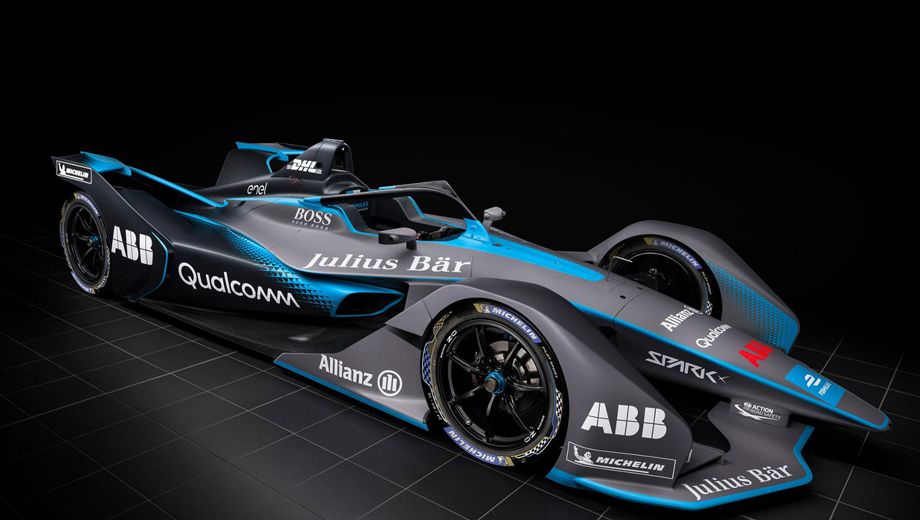Take a look at the insane Formula E race car that debuts next month

Formula E kicks off its 2019 season in December, ahead of a six-month roster with races at a dozen cities including Santiago, Hong Kong, Rome, Paris, Monaco, Berlin (at the old Tempelhof Airport), Bern and New York.
But whereas Formula One has a history of charismatic drivers and long-standing team rivalries, the all-electric series centers much of its hype on the unique design and engineering of the cars themselves.
These are whippet-thin, 1770kg machines capable of roughly 335 horsepower, with front ends shaped like blades.
The collective racing note sounds like a horde of hornets whizzing by the grandstands.
BMW is scheduled to enter the year as a manufacturer, teaming up with Andretti Autosport, and Mercedes affiliate HWA will join as a precursor to Mercedes’s official entry next season. Renault is out; Nissan is in.
But the biggest change this season is the car. Unlike Formula One, E-version supercars are all pretty much the same – allowing for minor tweaks to brakes, gears, and wheels. All those refinements hint at the systems coming for consumer vehicles in the years ahead. Here are nine things to know about the new season.
Battery
Hard to believe, but before this year, drivers had to change to a new car halfway through each 45-minute race.
This year each team will use a standardized 385kg lithium-ion battery developed by Williams Advanced Engineering Ltd. With twice the energy storage, it offers twice the range – enough to cover the full distance of each course.
Speed
Formula E cars can sprint to 100km/h in 2.8 seconds – about the same as their gasoline-powered brethren. But F1 cars can reach top speeds of 370km/h; in Formula E the maximum speed is 280km/h.
However, the motor in a Formula E machine can spin at 20,000rpm, which to 250kW of power – an F1 car is limited to 18,000rpm.
Aerodynamics
The car’s shape, including the needlelike nose and the huge wing in the back, efficiently directs and controls airflow.
Wheels
Wheel design has also been deregulated in Formula E, meaning each team can fine-tune the performance of their spoked 18-inch rims.
Brakes
Each team uses the same hydraulically operated braking system made by the Italian manufacturer Brembo. Formula E cars typically have carbon brake discs, which can reach temperatures as high as 1,000C. Heat management is crucial: Running brakes too hot means they oxidize and wear out quickly; running them cold reduces how well they stop.
Ride
A team may tailor the suspension to its liking. Most feature a double-steel wishbone suspension with twin dampers, plus adjustable anti-roll bars.
Formula E cars generally ride higher than F1 cars and come with multiple suspension settings, since most Formula E races are on city streets instead of racetracks. Each team uses the same carbon-fiber-and-aluminum “survival cell” (the protective framework around a driver), manufactured by Italian chassis designer Dallara Automobili.
Gears
Unlike the battery and power apparatus, the motors and transmissions aren’t standardized across the race field – each team can make them to its own specifications. Some teams use a one-gear solution, but others still use two or three.
Sound
At a Formula E race, the noise is a mixture of tires, the whish of the cars moving through the air, and the whir of their drivetrains. At top speeds, an electric race car reaches roughly 80 decibels – a little more than what a normal car produces at 110km/h. An F1 car can reach 130 db or more.




Hi Guest, join in the discussion on Take a look at the insane Formula E race car that debuts next month